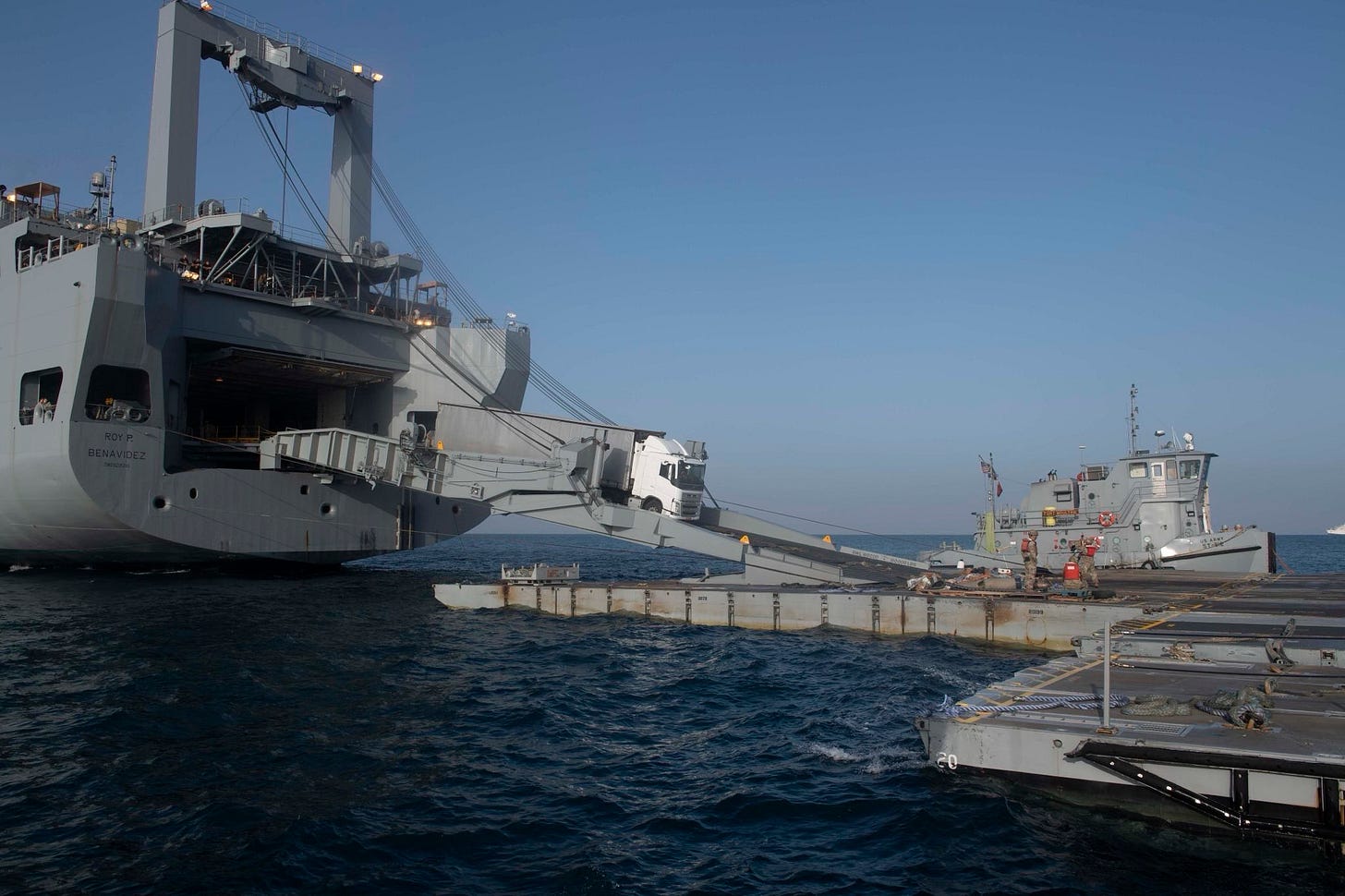US delivers aid to Gaza via pier; Strategic challenges to victory in Ukraine; Poles bolster border with Russia; The 'hidden secret' of alliance building
USAID, US Central Command: Assistance Arrives in Gaza Through Humanitarian Maritime Corridor

The men and women of U.S. Central Command are proud to support USAID in the delivery of humanitarian assistance to Gaza.
This corridor is a multinational and combined effort led by USAID and the Department of Defense - alongside the Republic of Cyprus, the United Nations, and international donors, including the UAE, the United Kingdom, Romania, and the European Union.
Reuters: Aid begins to arrive in Gaza via US-built pier
GAZA, May 17 (Reuters) - Aid deliveries began arriving at a U.S.-built pier off the Gaza Strip on Friday as Israel comes under growing global pressure to allow more supplies into the besieged coastal enclave, where it is at war with Palestinian militants Hamas and a famine looms.
CSIS White Paper: Victory in Ukraine Starts with Addressing Five Strategic Problems
Ukraine requires more than U.S. financial and military assistance; it requires political leadership and courage. If Ukraine is to win the war against Russia, the most recent assistance package cannot be the last that Congress passes.
Read the full report here.
AP: “Poland invests $2.5 billion into fortifying border with Russia and Belarus”
WARSAW, Poland (AP) — Poland is investing about $2.5 billion to step up security and deterrence on its border with Russia and its ally Belarus, the prime minister said Saturday.
Donald Tusk said work on the Shield-East project which includes building proper military fortifications has already begun. Poland is on the eastern flank of NATO and of the European Union and Tusk stressed it bears additional responsibility for Europe’s security.
“We have taken the decision to invest into our safety and first of all, into a safe eastern border, some 10 billion zlotys ($2.5 billion),” Tusk said.
War By Others Means: Fighting Alongside Friends
[Alliance building] is all a slow and often boring process of endless rounds of low-level diplomatic engagements and joint military exercises. It also consists of often overlooked tools of diplomacy like exchanges between students, or shared cultural tastes.
This is sort of the hidden secret to the whole act of putting together a coalition that works. It takes a lot of time and consensus building as we build trust and friendship with one another.
It doesn’t matter if you tell Seoul, Taipei, or Tokyo that they have to do this because some chart with munitions stockpiles says so if they don’t trust us and don’t want to work cooperatively with one another.
In much the same way that NATO works through shared values, consensus building, and long-term interoperability—any prospective coalition in the Pacific needs these considerations.
We’ll be much better off if we take the time to have the 20-year-olds who will fight the next war spend time running around on training exercises and singing songs from Cowboy Carter together first. Real life isn’t a game of Risk where you can move pieces of plastic around a board because you feel like it.





